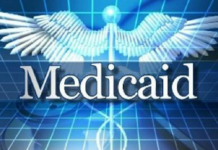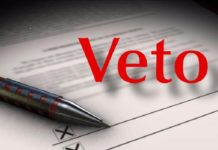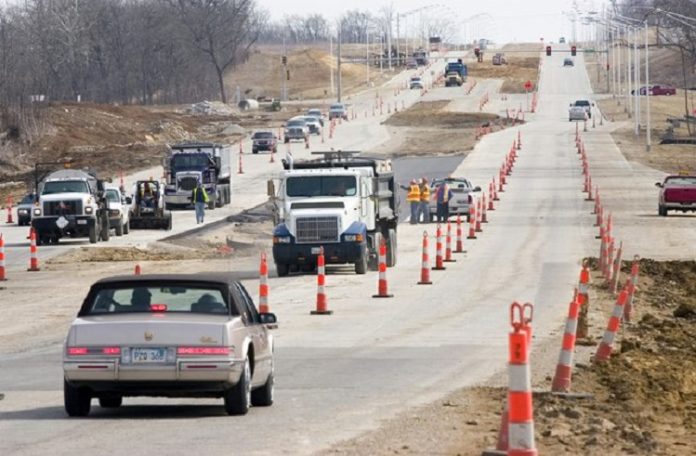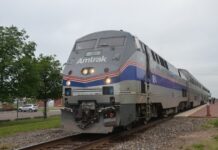Gov. Laura Kelly’s administration is building a new, nimble transportation plan that won’t require a tax increase but counts on stanching the flow of highway dollars into other parts of the state budget.
State transportation planners have been meeting with hundreds of local community leaders across Kansas as they assemble the state’s fourth multiyear transportation plan to address an estimated $18 billion in needs statewide.
The new plan will be different from previous programs as the state emerges from years of transferring billions out of transportation to fund the state budget amid deep tax cuts.
With a goal of ending those transfers by 2023, the new plan would spend nearly $10 billion over 10 years using resources approved for the current plan a decade ago.
The state is still finishing the current $8.2 billion plan, which was approved in 2010 but ultimately came in closer to $6 billion after money was diverted to other parts of the state budget.
The plan the Legislature will be asked to approve next year is significantly different because major road projects will be added to the program over years, giving the state the opportunity to respond to evolving transportation demands.
When the last plan was approved, the Transportation Department identified $2 billion in major expansion and modernization projects up front.
The new plan calls for identifying up to $1.2 billion in projects at the outset and putting them in a pipeline for development work such as engineering, design and right-of-way acquisition.
Gradually, those projects will be scheduled for construction, and more projects will be identified for the development pipeline every two years instead of all at once at the start.

The new program is intended to allow the state to be more flexible with its money as it responds to changing development and traffic patterns over time.
“Our landscape is changing too quickly, too dramatically for us to think we can pick 10 years’ worth of projects and have those stay relevant for 10 years,” said Julie Lorenz, secretary for the Kansas Department of Transportation.
“We know we’re going to hit a recession in the next 10 years,” she said. “We need to make sure we have a much more dynamic and responsive process so we can scale up and down.”
The new plan, Lorenz said, moves the state away from a “make-it-or-break-it moment” where major projects are decided once every decade.
“If you made it in, great. If you didn’t make it in, it was like, ‘Hey, come see us 10 years from now,'” she said.
“We’re just trying to meter this in a more businesslike fashion so everybody can plan and produce.”
Republican state Sen. John Skubal has advocated for much shorter transportation programs for those very reasons.
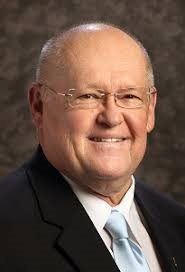
Skubal, who sits on the Senate Transportation Committee, said he has wanted to see a five-year transportation program that is reviewed yearly.
He thinks the Transportation Department’s approach is heading in the right direction with its proposed rolling program.
“Things change too fast today,” he said. “A 10-year plan doesn’t make any sense.”
Currently, the state has no major highway projects — other than $435 million remaining from the expiring plan — on the shelf and ready to build even if money was available.
Development work stopped on new major projects in 2015 and 2016 because the state didn’t have the money to build them.
It’s not a good posture for the state, especially if Congress approves a new transportation program, Lorenz said.
“We are not well positioned should a big, new federal program come around that has an emphasis on shovel-ready projects,” Lorenz said.
The new transportation program is intended to keep projects moving through the system and ready for construction as money comes available.
The new plan calls for setting aside money, as it has in the past, for public transportation, aviation and rail as well as bike and pedestrian projects.
It also would establish programs dedicated to bridges, strategic safety improvements, drone research and cost-sharing with local governments.
The new plan – like the last the program – will pledge to spend at least $8 million on transportation in each county during the next 10 years.
It also would guarantee that three major road projects from each of the Transportation Department’s six districts would be placed into development.
A couple hitches could relate to funding and the Transportation Department’s interest in moving to new ways of delivering major road construction projects.
Mike White, executive vice president of the Kansas Contractors Association, said there is concern about funding even with the governor’s pledge to stop transfers from transportation.

He pointed out that the state wants to rely on funding approved in 2010 — increased registration fees on heavy trucks, for example — to fund another decade of projects.
“What we’re being asked to look at for the next 10 years is the exact same thing we just did for 10 years,” White said.
“We’re talking about the same funding level for our infrastructure in this state for 20 years, and that’s assuming they keep the money in the program and they don’t take it,” he said.
At the very least, White said the state needs to ensure that money marked for transportation stays with transportation.
“We’ve got to figure out a way to protect the funding more than anything,” White said.
“If we’re going to rely on the sales tax transfer coming back as the primary funding source of this program, then we need to figure out how to protect that,” he said.
Republican state Sen. Richard Hilderbrand has introduced a constitutional amendment that would ban transfers from the highway fund.
But a constitutional amendment requires support from two-third of the Legislature and must be ratified by the voters.
If the money is not protected, White said, then the state needs to consider ways to increase funding, whether it’s raising the gas tax or increasing vehicle registration fees.
White has floated the idea of a so-called gas tax trigger that would be tied to money diverted from transportation into other parts of the state budget.
As money is moved out of transportation, the gas tax would automatically increase, acting as a disincentive for channeling the money to other parts of the budget.
The gas tax increase, he said, would remain in place until the money is returned to the Transportation Department.
State highway officials believe the “rolling” nature of the new transportation plan — with projects added every two years — will apply pressure to keep the program funded.
There also are some reservations about the Transportation Department’s interest in getting the Legislature to authorize new ways to deliver major transportation projects.
Traditionally, the department has used a method where a project is designed, then let for bidding and then constructed. It’s a process known as design-bid-build.
The Transportation Department is looking at new ways to undertake major construction projects that could potentially save time and money.
However, contractors are concerned about those new methods, including one where design and construction are rolled into one package and submitted as a bid.
“There’s a whole spectrum of concerns,” White said.
“You have concerns related to contractors being qualified to be able to bid on a project,” he said, “you have concerns about the selection process of the project.”
White noted there are a lot of small contractors in Kansas that might not have the staff and expertise that would be required if an alternative delivery method was used.
The Kansas Contractors Association, he said, has traditionally opposed using alternative delivery.
He said the organization has been talking to the Transportation Department about how it wants to use alternative delivery
State transportation officials said they are looking for the Legislature to authorize the agency to use an alternative delivery method.
They have not identified any specific delivery methods, saying it could vary depending on the project.
“We’re still working with the contractors on what an acceptable and reasonable increase in our authority in that area would be,” said Lindsey Douglas, deputy transportation secretary.
The state used a so-called design-build process — where the design and construction are packaged together — to rebuild the interchange at Interstate 435, Kansas 10 and Interstate 35 in southern Johnson County.
Transportation officials said the process used in that project reduced construction time by a year and netted the state 12% more construction for the project.
White said funding remains the principal issue as the Legislature debates a new transportation plan.
“The funding impacts everything we do,” White said. “If there’s less funding, now you’re talking about less dollars to be able to maintain the system and expand the system.
“Now, you’re talking about less opportunity to use things like alternative delivery,” he said.



